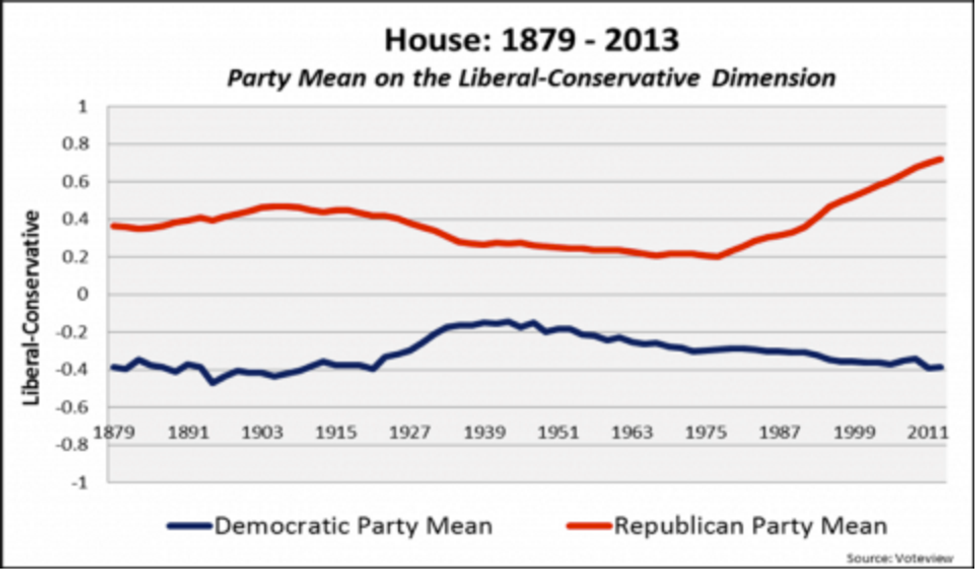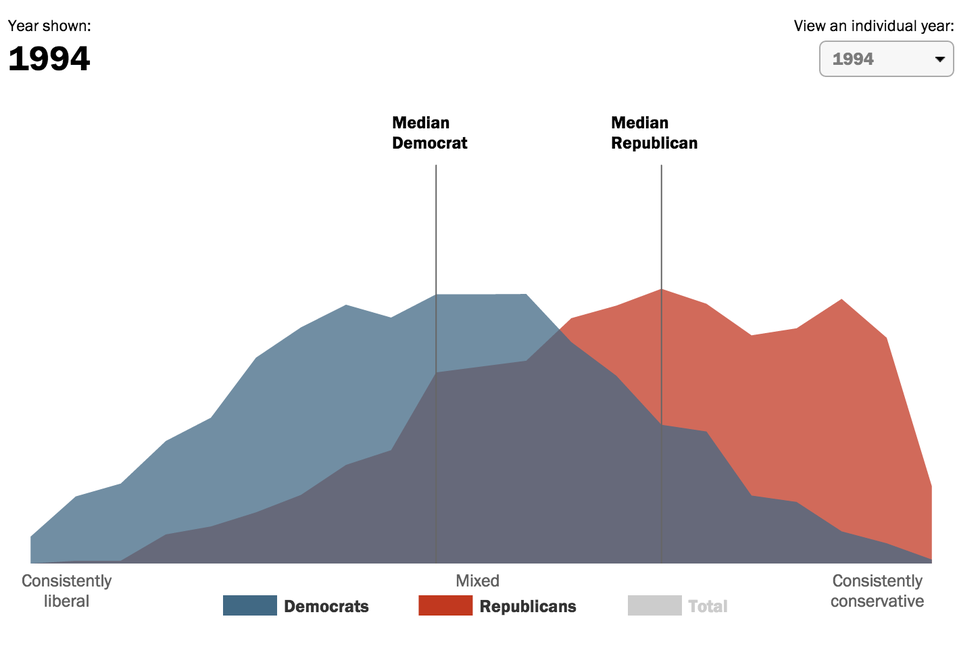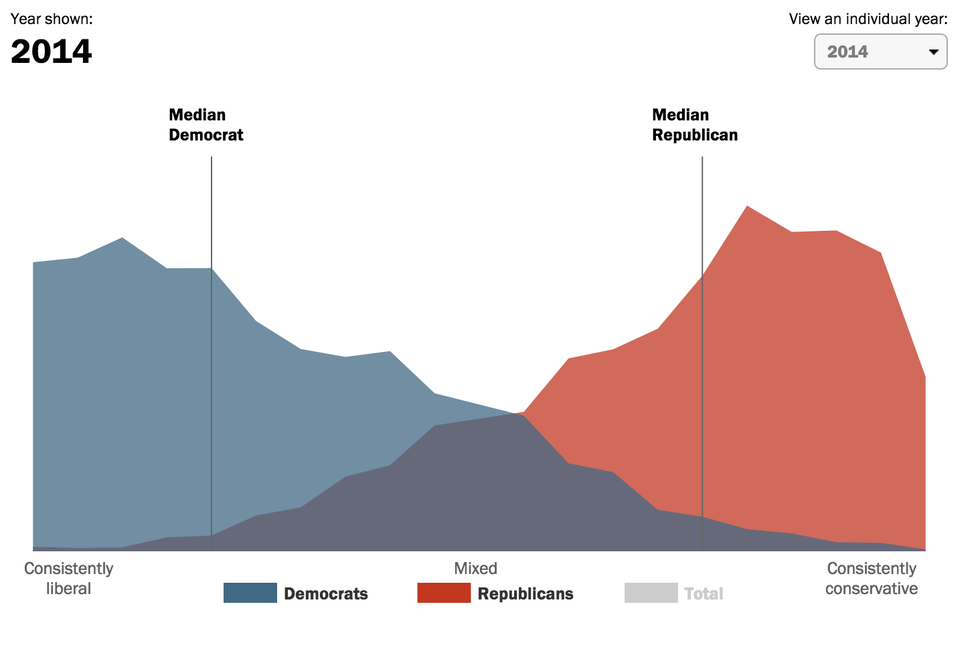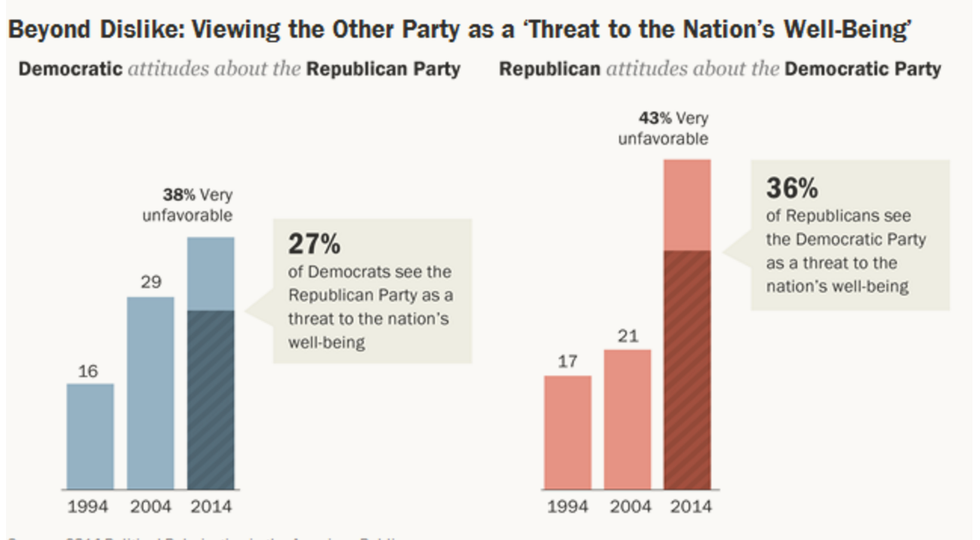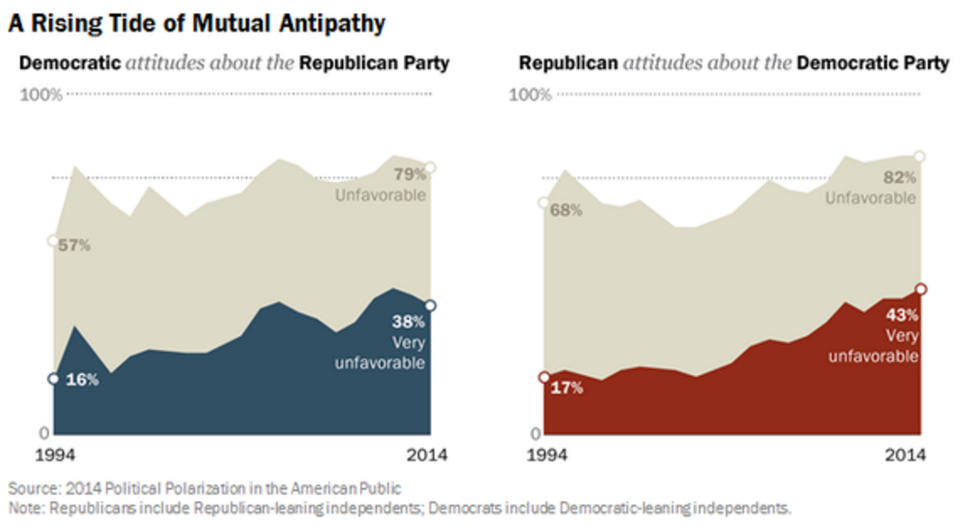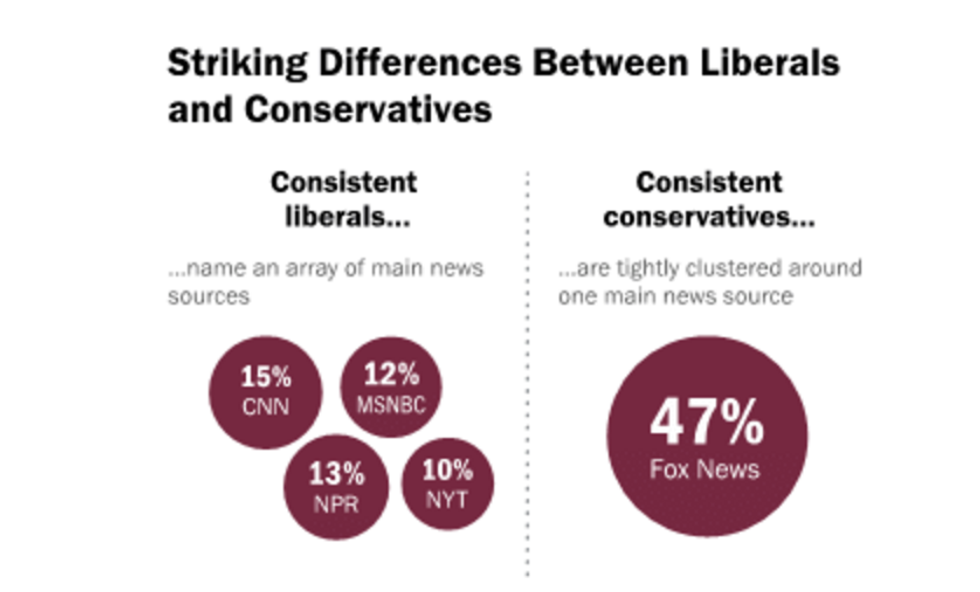On September 19, 1796, Philadelphia’s American Daily Advertiser published George Presidents Farewell Address. It was in this that the president advised the nation of three major things; avoid long-term foreign alliances, warning against sectionalism, and to warn about the danger of political factions. However, in 1786 the United States already had it’s first political party; the Federalists. At this time, though, it was not the party system that is known today. It was not until the 1930’s, with Franklin Delano Roosevelt’s New Deal Programs, that the divide between parties, that is so well known today, really took form.
The implications that follow the two party system that the United States has in place today, are exactly what Washington feared; a divided nation. More so with the 2016 Presidential Election, the nation is not “one nation” as the Pledge of Allegiance so proudly states, but is in fact, two nations; one filled with Democrats and one filled with Republicans. Data shows that since 1994, the United States has become increasingly polarized in regards to its politics. As the graphs below shows, it also increases hostility towards members of the opposite political party.
This graph shows how, since 1879, the parties have become increasingly polarized.
Above shows how in 1994, the 'median' Democrat/Republican were relatively close in ideals, whereas below shows how just 20 years later, that has shifted dramatically.
The graphs, both above and below, show how over the past 20 years, an increasing amount of Democrats and Republicans dislike the other party.
Data was also conducted that found voters often own get their news from sources that share the same views as them. Thus, voters never get the full picture of what is occurring in the U.S., and instead get a skewed view.
This data states the sources that liberals and conservatives consistently get their news from.
This not only divides a nation, but also deters moderates from engaging in politics. A politician is not allowed to agree with some Democratic ideals and some Republican ideals, that is absurd. Especially when running for President of the United States. John Kasich is a perfect example. While he was seen as a more moderate option in regards to the Republican nominees, he polled incredibly low and stood no chance at clenching the nomination. However, Donald J. Trump, a man who has incredibly conservative ideals, easily clenched the nomination. This ideology that the other party is a “threat to the nation’s well-being” is what is truly a threat to the nation. It discourages voters from voting based on their ideals and actual beliefs, and instead to blindly cast their vote based on their party preference.
Further, this type of politics deters from third parties ever standing a chance. No Democrat wants to vote other than Democrat and no Republican wants to vote non-Republican. When they do, they often stand no chance at securing a third party victory. In 2000, although Ralph Nager, a Green Party candidate, secured 2.8 million votes, he did not stand a chance next to Gore and Bush’s 50 million. Many Democrats actually blamed Nager for Gore’s lose, as he was only 1 million votes short of Bush’s total votes.
While many nations worldwide, including the UK and Australia, do also engage in a two-party system, the divide that is seen between the two is not as large as that in the United States. Not much can be done about this divide, honestly. However, simply acknowledging the divide that is there an ensuring that, as a voter, you educate yourself based on a candidates ideals instead of just their political party is huge.




